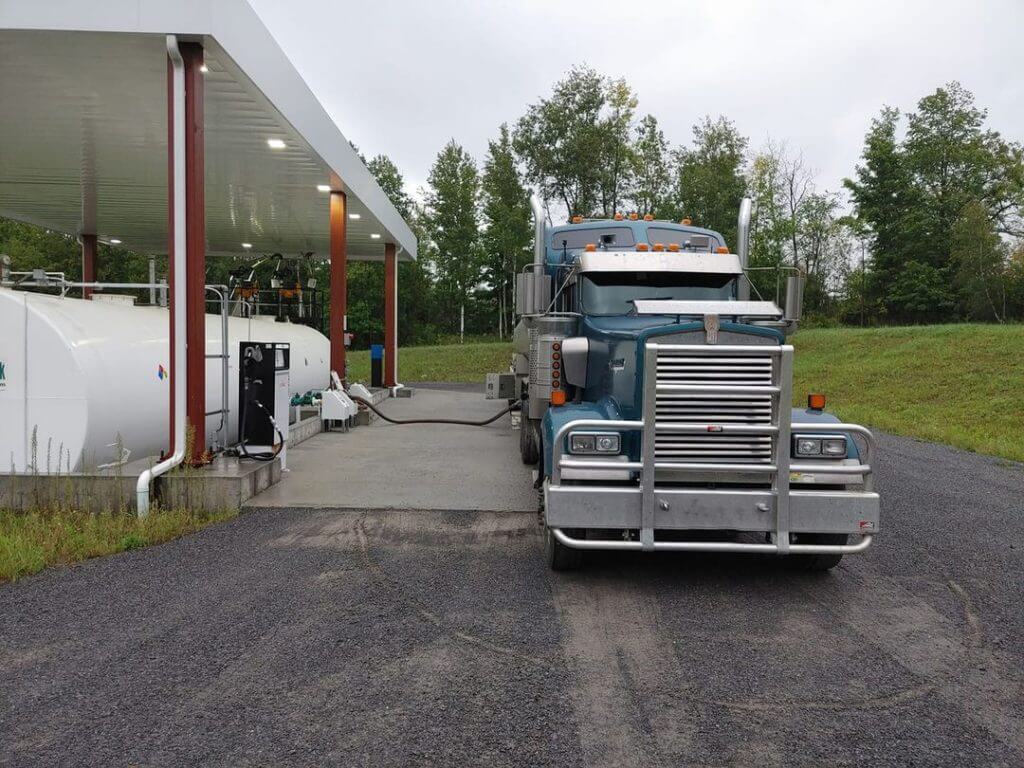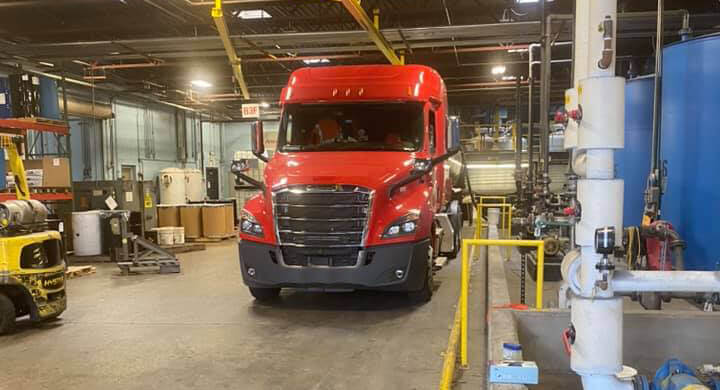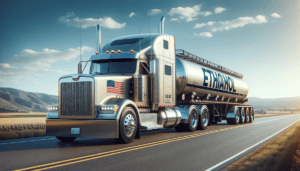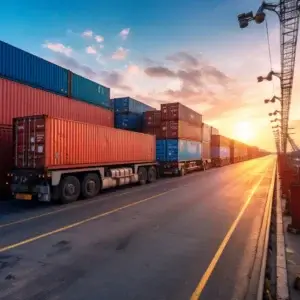
Proper liquid bulk tanker loading or unloading is crucial to the quality maintenance of chemical products. And if things go wrong here, the consequences are usually catastrophic.
The tanker loading and unloading process often includes the inspection of the truck, trailer, and equipment, and verifying that the right tanker is unloading the right chemical product into the right storage tank. It also requires an expert level of competence by the driver to pay attention while the process is ongoing and spot potential issues before they develop.
In this article, you’ll learn the proper loading and unloading process of a bulk liquid tanker. But first, check out important tips on how to remain safe during the process.
Safety Tips for Loading and Unloading A Liquid Bulk Tanker
Safety should always be the foremost thing during the loading and unloading of any chemical. That is why the driver should always wear the right Personal Protective Equipment (PPE). This includes:
- Eye protection
- Long sleeve shirt
- Gloves
- Full-length trousers
- Safety shoes
The Loading Process of A Liquid Bulk Tanker
Various chemicals have varying loading procedures, depending on the nature of the chemical. For instance, some chemicals require pumps for unloading. Using compressors for these chemicals could have dangerous consequences. The same thing goes for the use of pumps for chemicals that require compressors. There are even times when both pumps and compressors must be used to achieve the most effective results.
There are two loading types for truck tankers. The first is top-loading, and the other is bottom loading. Top loading is the traditional type, whereby a hose is connected to the manhole at the top of the truck trailer. Bottom loading passes chemicals into the tank through valves and fittings underneath the truck trailer.
The difference between top loading and bottom loading of chemicals into a truck trailer is that bottom loading is safer for loading fuel products. Loading from the top might increase the agitation and sloshing of the bulk fuel product. This could lead to the formation of more vapor than necessary. Vapor is bad, especially when it comes from flammable liquids because you can’t see it with your eyes but the slightest spark could set off. Bottom loading, however, does not agitate the liquid fuel product as much.
Steps to Load Bulk Liquid Into a Truck Trailer
Before we proceed, note that the steps here are not exhaustive. Some steps may differ or may be included, depending on the nature of the chemical being loaded. However, you’ll find that the loading procedures here are more geared towards inflammable bulk liquid.
Without wasting more time, here are the generic steps to take when loading bulk liquids from storage tanks into truck trailers.
Before Loading
As a driver, these are the steps you should take before loading the bulk liquid product into the truck tanker:
- Do your inspection. Go round your vehicle as you do a thorough inspection. See if all the pieces of equipment you need for the loading process are complete. Confirm that there are no defects on the equipment, such as leaks, broken springs, misaligned axles, and so on. If there is any odor, look for the source and try to stop it.
- Check all the trailer compartments to be sure that they are completely empty. The last thing you want is the mixing of some products you don’t want to mix. This shouldn’t be a problem, however, if the vehicle has been taken to the wash station before this shipment.
- Confirm that you’re about to load the right chemical. And if the chemical is hazardous, ensure that your truck trailer has all the necessary labels. Also confirm that you have brought the right trailer for the right chemical, such as an in-transit heat trailer for temperature-sensitive bulk liquids.
Loading Procedures
These are the loading steps when loading a liquid bulk tanker:
- Position your trailer on the proper loading spot. Make sure it is positioned in such a way that the drop tube goes vertically into the tank and reaches as far down into the tank as it can to reduce turbulence.
- Turn off the engine of the truck. Every other piece of electrical equipment, such as the radio and lights, should be off too. This precaution is most necessary if you’re loading a flammable liquid because the slightest spark could set off a fire.
- Check to see if all compartment valves are closed if you’re loading into a compartmentalized tank trailer.
- For the loading of combustible liquids, connect a grounding interlock to the truck. The grounding interlock connects the truck to the ground so that static charges can flow into the ground where they pose no risk of igniting the chemical. Do this before you open the dome cover.
- When loading into a compartmentalized truck, only the compartment being filled should be open. Others should remain closed.
- You’re all set for loading. But just before loading, use the tip of the loading spout to touch the truck some few feet away from the loading hatch to ground any static charges. Again, this step is important for the loading of combustible chemicals.
- Set the meter stop, if there’s one, to the desired quantity to avoid overfilling. Remember to leave some vacant space (outage) for liquid thermal expansion.
- Open the loading valve so that product flow starts. Start with slow loading for the following chemicals:
- Kerosene
- Jet fuel
- Turbine fuel
- Diesel fuel, and
- Heating oil.
This is because these liquids are likely to generate static electric charges in pipes and the initial turbulence when the chemical hits the bottom of the truck could be dangerous. To be safe, slow the loading to about 120 gallons per minute or less for the first 6 inches of the compartment.
- Never go too far away from the loading truck while loading is ongoing. Avoid any form of distraction. Your full attention should be on the loading process.
- Close the loading valve when the truck trailer is filled, but leave the drop tube in the tank for a few minutes to allow for complete draining.
- Close the dome cover.
- Repeat these steps for every other truck trailer compartment you’re loading. Reposition the truck if necessary to make sure all compartments are properly filled.
- Disconnect grounding interlock.
- Take a walk around your truck once again to verify that every used equipment has been returned to its proper place and everything is as it should.
- Drive the truck away from the loading spot and report all malfunctions, if there were any, to your supervisor.
The Unloading Process of A Liquid Bulk Tanker
Just as it is with loading, the unloading processes of chemicals often differ depending on the chemical. It is then the responsibility of the carrier to know all the required unloading procedures for whatever chemical product it chooses to transport.
Once again, what we have are the generic steps to unload bulk liquid from truck trailers into storage tanks. The steps are not exhaustive, and the liquid bulk carrier should know when to take additional steps to suit the chemical they’re unloading.
Steps to Unload Bulk Liquid Into a Storage Tank

These are the steps to take when unloading a liquid bulk tanker into a storage tank:
Before Unloading
- Park your delivery tanker at the proper unloading spot and turn off the engine. Position the truck at the optimal position to deliver your trailer content into the storage tank.
- Turn off every other electrical equipment in the truck.
- Take a walk around the truck as you inspect the truck, the delivery tank, and the unloading equipment. Ensure that nothing is out of place. Ensure that the unloading equipment is clean and in proper working conditions.
- Create a perimeter by demarcating the unloading area so that no one wanders too close.
- Confirm that the chemical you’re unloading matches the tank you’re unloading into.
- The storage tank must have been unambiguously labeled to avoid confusion. Otherwise, do not unload into this tank until call dispatch.
- Confirm that the tank can hold all the products you’re delivering.
- Fill up every necessary paperwork before you start unloading.
Unloading Procedure
- Attach the unloading hose after you uncap the discharge connection.
- Confirm that all receiving valves are closed before you attach the discharge hose to the appropriate receiving line and the right tank.
- Only the tank receiving the product should be open while other adjoining tanks should be closed.
- For chemicals that are prone to releasing vapor, attach a vapor recovery system.
- You’re set to unload your chemical product into the storage tanks. Open the internal safety valves of tank compartments being unloaded into the storage tank. To be safe, only unload from a maximum of two tank compartments at once. Every other valve should remain closed.
- Open the discharge valve as carefully as you can and check for leaks.
- Stay close as unloading is ongoing. As the driver, your attention should be on the unloading process. Avoid distractions and be on a constant check for leaks, vent overfills, and other potential issues.
- Make sure to drain all the products in the tank. Leaving products in the tank is unlawful and has consequences attached.
- Close all the valves you opened before unloading. Sometimes, these valves may shut accidentally before the compartment has been completely drained. So, make sure all the valves you opened haven’t already closed.
- After closing the valve, drain residual products from the fittings and hoses into the storage tank.
- Return all the fittings and hoses to their rightful places.
- Fill up all paperwork that verify that you’ve unloaded all the products.
- Close caps and manholes.
- Carefully drive your truck away from the delivery spot.
Conclusion
The loading and unloading of a liquid bulk chemical are simple tasks. The generic procedure includes inspecting the truck, trailer, and equipment. You then verify that the storage tank and the truck trailer are for the right chemical. Then comes the opening of necessary valves in the right order, and closing them after unloading or loading. And finally, paperwork filling.
However, things could quickly go wrong under the watch of an incompetent bulk liquid carrier. An error as simple as unloading a chemical into the wrong storage tank could lead to product contamination. Using a pump unloader instead of a compressor is another error on the long list of things that could go wrong with bulk liquid loading and loading. The worst part is that these errors are usually costly and may lead to one or all of the following:
- Loss of lives
- Loss of properties
- Reduction in product quality
- Product waste
- Waste of money, time, and resources
But you can avoid these unfavorable consequences when you transport your bulk liquids with Total Connection.
Choosing Total Connection as Your Liquid Bulk Carrier
You can avoid bulk liquid carrier issues when you choose Total Connection as your liquid bulk carrier.
Total Connection is a third-party logistics company that deals in all kinds of bulk liquid transport for all industries, including agric, construction, and oil and gas. We tailor our services to your needs so that you too can have access to the best bulk chemical shipping solutions. What you get is:
- Product safety at all times during transit.
- Round-the-clock customer service with access experts for your chemical shipping needs.
- Flexible services that allow you to make late orders and cancellations on short notice.
- Affordable costs.
- Massive insurance cover in the very rare case of accidents.
You only need to fill up the brief quote form below to contact us.





